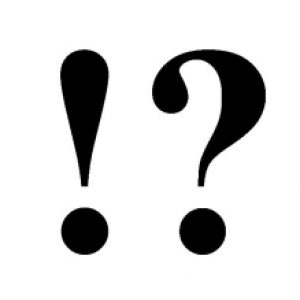The past few days I re-visited Feynman’s lectures on quantum math—the ones in which he introduces the concept of probability amplitudes (I will provide no specific reference or link to them because that is apparently unfair use of copyrighted material). The Great Richard Feynman introduces the concept of probability amplitudes as part of a larger discussion of two-state systems—and lasers and masers are a great example of such two-state systems. I have done a few posts on that while building up this blog over the past few years but because these have been mutilated by DMCA take-downs of diagrams and illustrations as a result of such ‘unfair use’, I won’t refer to them either. The point is this:
I have come to the conclusion we actually do not need the machinery of state vectors and probability amplitudes to explain how a maser (and, therefore, a laser) actually works.
The functioning of masers and lasers crucially depends on a dipole moment (of an ammonia molecule for a maser and of light-emitting atoms for a laser) which will flip up and down in sync with an external oscillating electromagnetic field. It all revolves around the resonant frequency (ω0), which depends on the tiny difference between the energies of the ‘up’ and ‘down’ states. This tiny energy difference (the A in the Hamiltonian matrix) is given by the product of the dipole moment (μ) and the external electromagnetic field that gets the thing going (Ɛ0). [Don’t confuse the symbols with the magnetic and electric constants here!] And so… Well… I have come to the conclusion that we can analyze this as just any other classical electromagnetic oscillation. We can effectively directly use the Planck-Einstein relation to determine the frequency instead of having to invoke all of the machinery that comes with probability amplitudes, base states, Hamiltonian matrices and differential equations:
ω0 = E/ħ = A/ħ = μƐ0/ħ
All the rest follows logically.
You may say: so what? Well… I find this very startling. I’ve been systematically dismantling a lot of ‘quantum-mechanical myths’, and so this seemed to be the last myth standing. It has fallen now: here is the link to the paper.
What’s the implication? The implication is that we can analyze all of the QED sector now in terms of classical mechanics: oscillator math, Maxwell’s equations, relativity theory and the Planck-Einstein relation will do. All that was published before the first World War broke out, in other words—with the added discoveries made by the likes of Holly Compton (photon-electron interactions), Carl Anderson (the discovery of anti-matter), James Chadwick (experimental confirmation of the existence of the neutron) and a few others after the war, of course! But that’s it, basically: nothing more, nothing less. So all of the intellectual machinery that was invented after World War I (the Bohr-Heisenberg theory of quantum mechanics) and after World War II (quantum field theory, the quark hypothesis and what have you) may be useful in the QCD sector of physics but − IMNSHO − even that remains to be seen!
I actually find this more than startling: it is shocking! I started studying Feynman’s Lectures – and everything that comes with it – back in 2012, only to find out that my idol had no intention whatsoever to make things easy. That is OK. In his preface, he writes he wanted to make sure that even the most intelligent student would be unable to completely encompass everything that was in the lectures—so that’s why we were attracted to them, of course! But that is, of course, something else than doing what he did, and that is to promote a Bright Shining Lie !
[…]
Long time ago, I took the side of Bill Gates in the debate on Feynman’s qualities as a teacher. For Bill Gates, Feynman was, effectively, “the best teacher he never had.” One of those very bright people who actually had him as a teacher (John F. McGowan, PhD and math genius) paints a very different picture, however. I would take the side of McGowan in this discussion now—especially when it turns out that Mr. Feynman’s legacy can apparently no longer be freely used as a reference anyway.
Philip Anderson and Freeman Dyson died this year—both at the age of 96. They were the last of what is generally thought of as a brilliant generation of quantum physicists—the third generation, we might say. May they all rest in peace.
Post scriptum: In case you wonder why I refer to them as the third rather than the second generation: I actually consider Heisenberg’s generation to be the second generation of quantum physicists—first was the generation of the likes of Einstein!
As for the (intended) irony in my last remarks, let me quote from an interesting book on the state of physics that was written by Doris Teplitz back in 1982: “The state of the classical electromagnetic theory reminds one of a house under construction that was abandoned by its working workmen upon receiving news of an approaching plague. The plague was in this case, of course, quantum theory.” I now very much agree with this bold statement. So… Well… I think I’ve had it with studying Feynman’s Lectures. Fortunately, I spent only ten years on them or so. Academics have to spend their whole life on what Paul Ehrenfest referred to as the ‘unendlicher Heisenberg-Born-Dirac-Schrödinger Wurstmachinen-Physik-Betrieb.’
